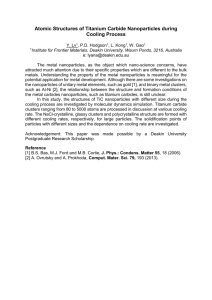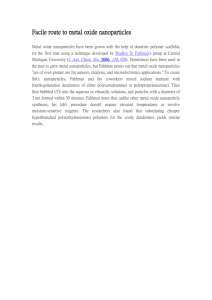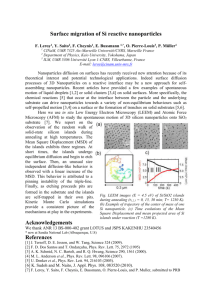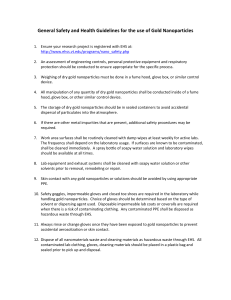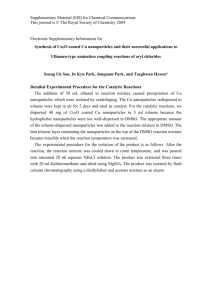Metal Nanoparticles: A New Generation Catalyst for Organic Synthesis
advertisement
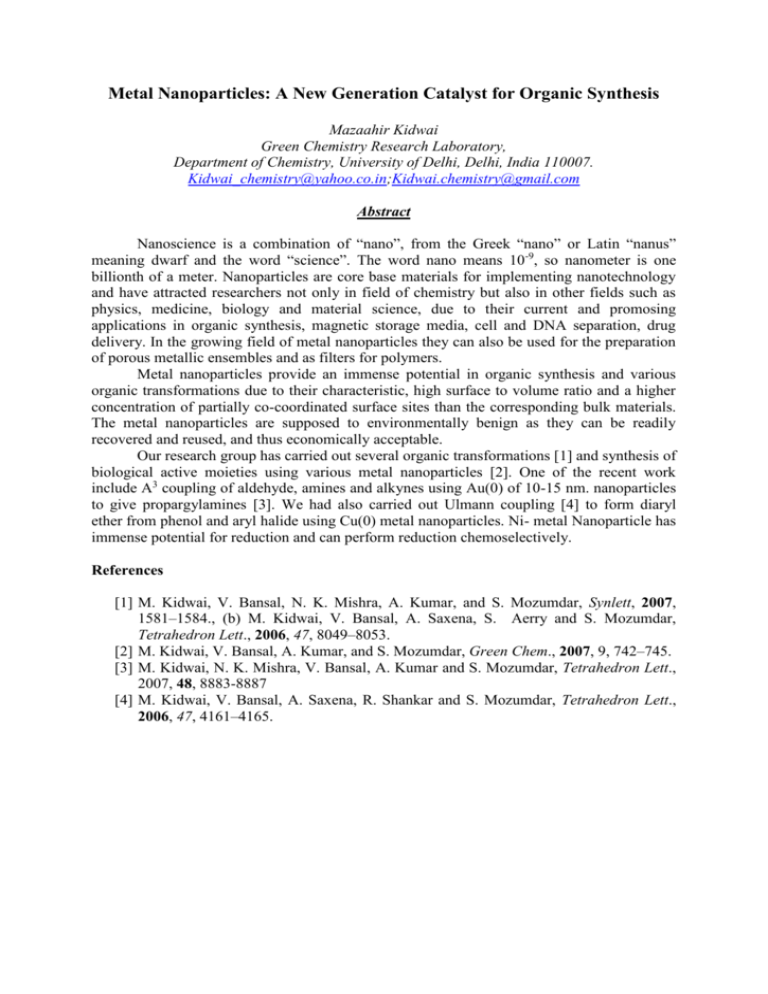
Metal Nanoparticles: A New Generation Catalyst for Organic Synthesis Mazaahir Kidwai Green Chemistry Research Laboratory, Department of Chemistry, University of Delhi, Delhi, India 110007. Kidwai_chemistry@yahoo.co.in;Kidwai.chemistry@gmail.com Abstract Nanoscience is a combination of “nano”, from the Greek “nano” or Latin “nanus” meaning dwarf and the word “science”. The word nano means 10-9, so nanometer is one billionth of a meter. Nanoparticles are core base materials for implementing nanotechnology and have attracted researchers not only in field of chemistry but also in other fields such as physics, medicine, biology and material science, due to their current and promosing applications in organic synthesis, magnetic storage media, cell and DNA separation, drug delivery. In the growing field of metal nanoparticles they can also be used for the preparation of porous metallic ensembles and as filters for polymers. Metal nanoparticles provide an immense potential in organic synthesis and various organic transformations due to their characteristic, high surface to volume ratio and a higher concentration of partially co-coordinated surface sites than the corresponding bulk materials. The metal nanoparticles are supposed to environmentally benign as they can be readily recovered and reused, and thus economically acceptable. Our research group has carried out several organic transformations [1] and synthesis of biological active moieties using various metal nanoparticles [2]. One of the recent work include A3 coupling of aldehyde, amines and alkynes using Au(0) of 10-15 nm. nanoparticles to give propargylamines [3]. We had also carried out Ulmann coupling [4] to form diaryl ether from phenol and aryl halide using Cu(0) metal nanoparticles. Ni- metal Nanoparticle has immense potential for reduction and can perform reduction chemoselectively. References [1] M. Kidwai, V. Bansal, N. K. Mishra, A. Kumar, and S. Mozumdar, Synlett, 2007, 1581–1584., (b) M. Kidwai, V. Bansal, A. Saxena, S. Aerry and S. Mozumdar, Tetrahedron Lett., 2006, 47, 8049–8053. [2] M. Kidwai, V. Bansal, A. Kumar, and S. Mozumdar, Green Chem., 2007, 9, 742–745. [3] M. Kidwai, N. K. Mishra, V. Bansal, A. Kumar and S. Mozumdar, Tetrahedron Lett., 2007, 48, 8883-8887 [4] M. Kidwai, V. Bansal, A. Saxena, R. Shankar and S. Mozumdar, Tetrahedron Lett., 2006, 47, 4161–4165.

